
The Withering Remains of 295 George Street
Half-way up Toronto's infamous George street lies the decaying Tudor facade of a once beautiful mid-19th century house.
Few would associate this stretch of the neighbourhood with much more than strippers and drug dealers, yet a row of abandoned historical properties sit in its midst, slowly dying. I took a look at the decaying innards of Thomas Meredith House several weeks back, one of three such derelict properties on the street -- and will now examine one of its associates, the neighbouring number 295.
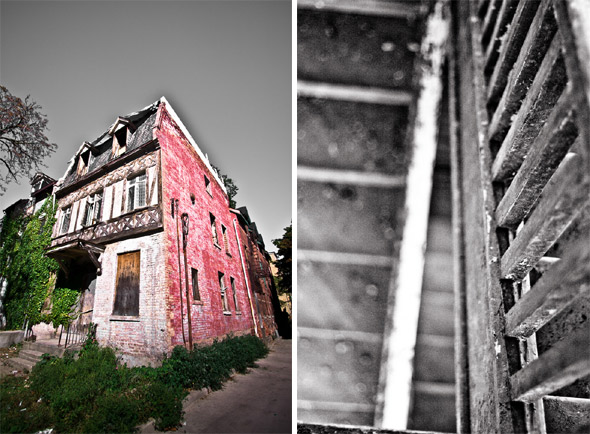
In an earlier life, the property served as a boarding house for Irish, English and Scottish immigrant boys under one Mr. Fegan, who helped the young lads get on their feet after their arrival in Canada. The noted William Gooderham (of Gooderham and Worts Distillery fame) left the property as well as a large sum of money to Fegan after his own death, in order to continue the good work.
Sadly, only hints of the building's former glory remain...
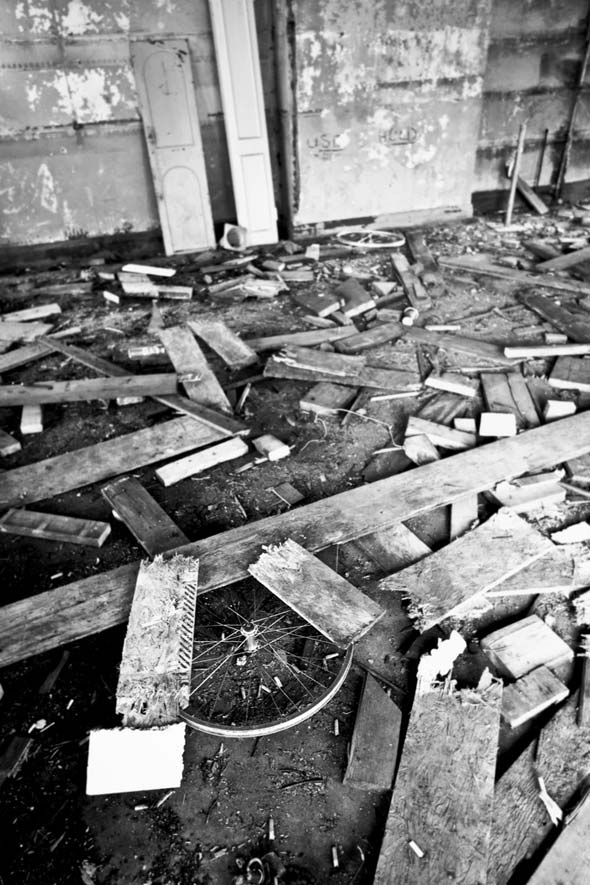
Recent owners have started and stopped work on the property so often that it holds little hope for revitalization...
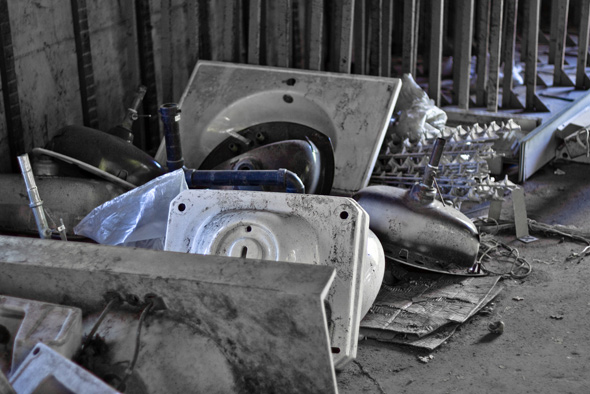
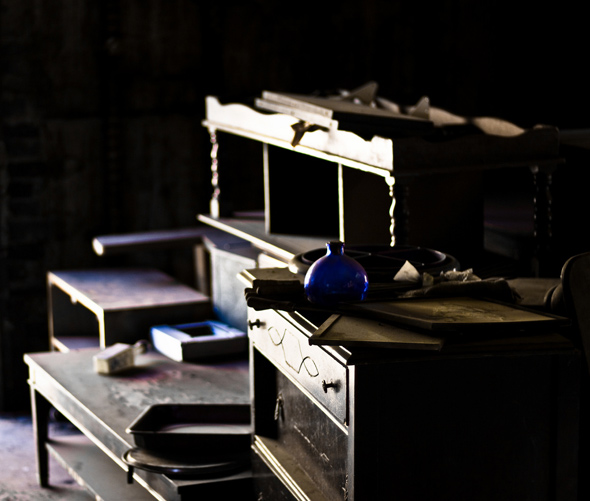
The constant stripping and scrapping has left the stability of the structure itself fairly questionable...
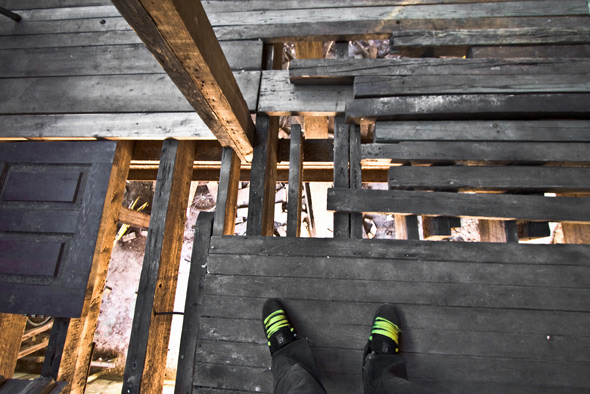
The remaining shambles reveal very little, giving the impression of a junk storage facility, only the exterior giving some hint of its once beautiful form.
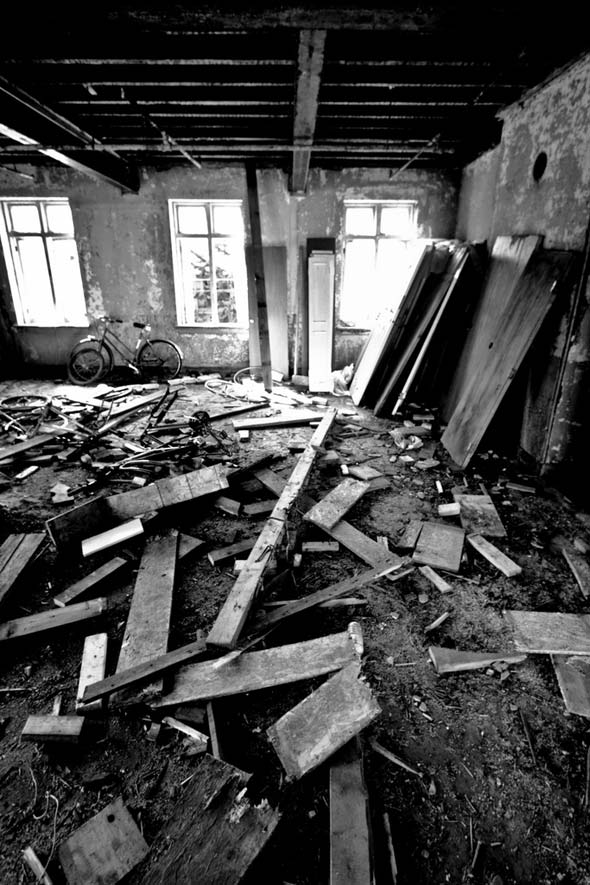
Some years back, it was even home to the dismembered remains of sheep, which sat rotting until neighbours complained about the awful stench. The site was subsequently nicknamed the "lamb slaughter house" by locals...
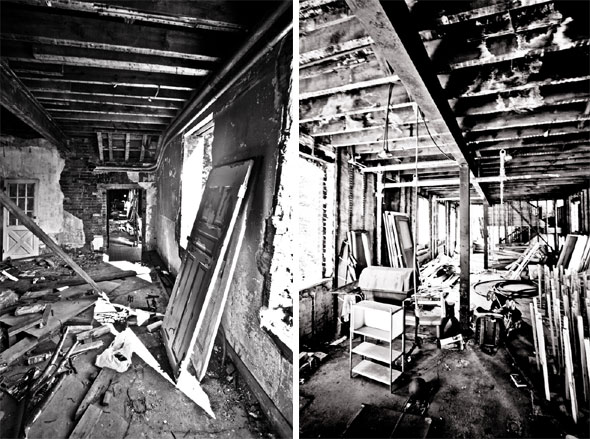
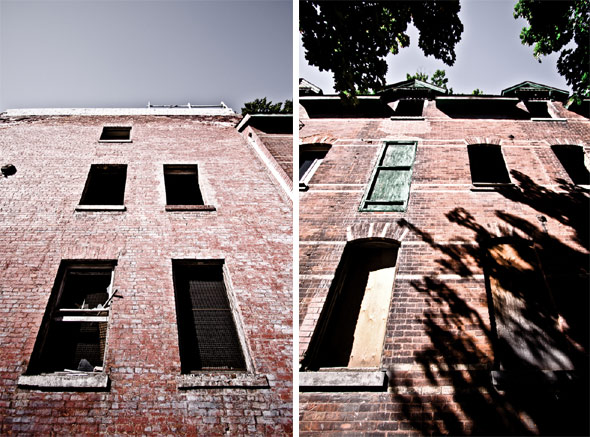
While part of the uppermost floor was (apparently) being renovated after the roof partially caved-in a few years back, a local stencil-artist marked a northern wall with a portion of Francisco Goya's "Third of May", singling out the riflemen in the original painting. The marking remains until this day in a bold red, behind what is now skeletal beams holding this portion of the building in place...
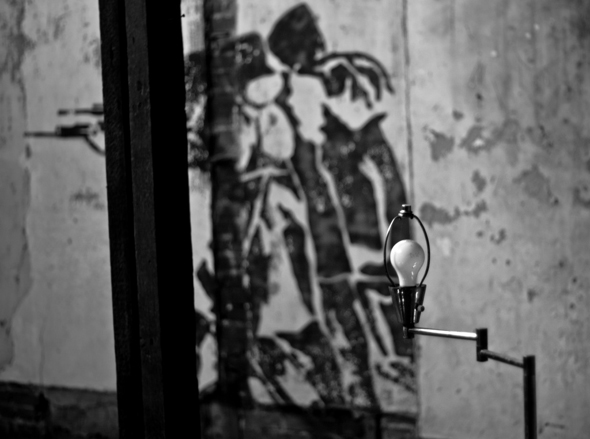
Starved for attention, this almost hopelessly half-renovated structure has sat quietly beside its equally yearning neighbours in wait of a savior who will likely never come.
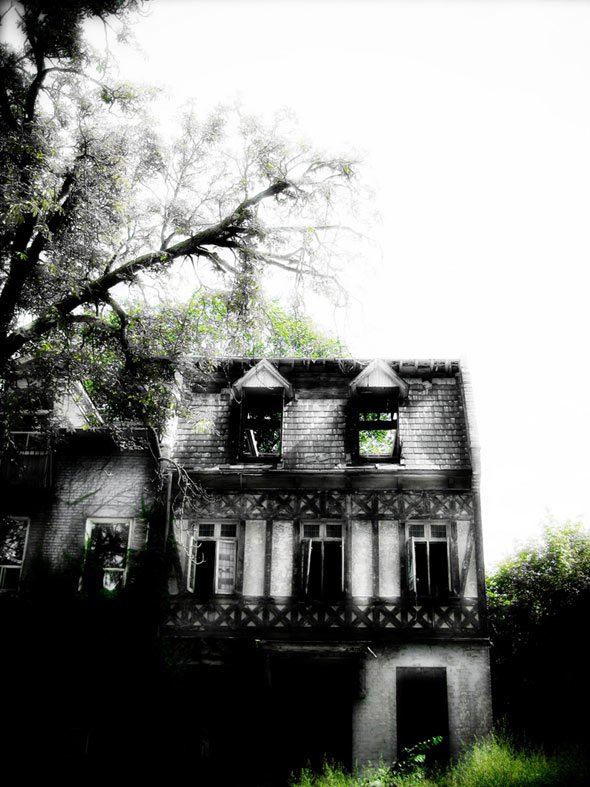
Of all my memories of this place, it is the red stencil, now so precariously posed, which haunts me the most. The isolation of the resistance, de-contextualized, rifles pointing toward an empty window looking out onto an equally empty street, is an image I will not soon forget.
The almost-too-perfect image of this shattered dream, its frameless windows like so many gaping mouths, tells a tale we know too well: that of neglect. It would seem that our city has serious abandonment issues.
We witness, then, a building held hostage by its location and the process of decay. On the one hand, there is the more recent history of a neighbourhood that has much larger problems to deal with. On the other, we observe decline as a byproduct of circumstance.
Perhaps it is for this reason, then, that we are able to synthesize the seemingly irrational notion of an abandoned building with our own image of urban life. For some, this phenomenon will be an eternal source of intrigue and wonder, for others, a mere blight or eyesore on a seamless model of progress. For myself, I cannot disconnect the idea of urbanity or urban life from the inherent prospect of empty buildings, with their solemn, silent message.
(To see the rest of the photo set, as well as high-res. versions of the images above, you can check out my flickr slide-show below.)
Latest Videos
Latest Videos
Join the conversation Load comments







